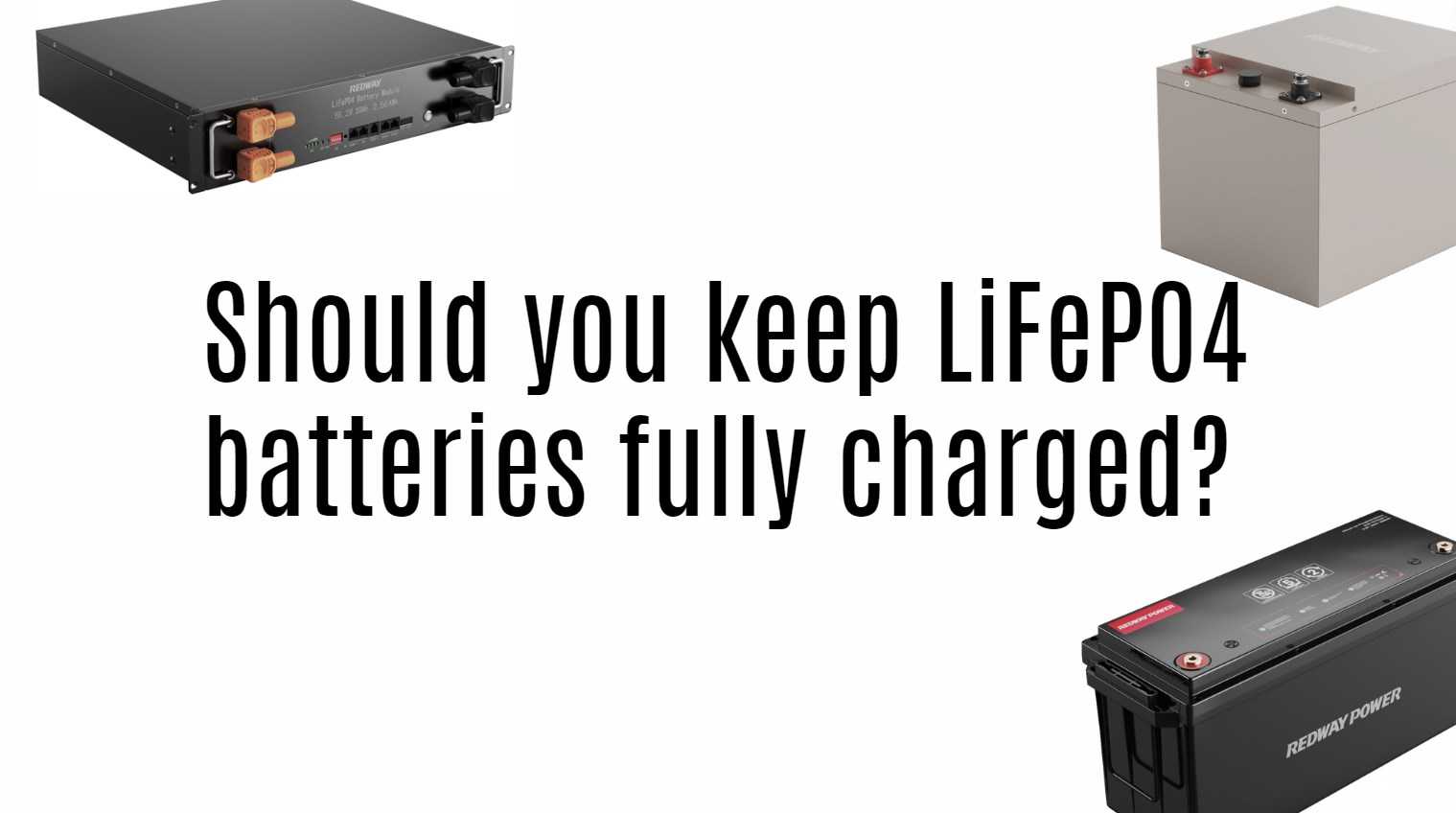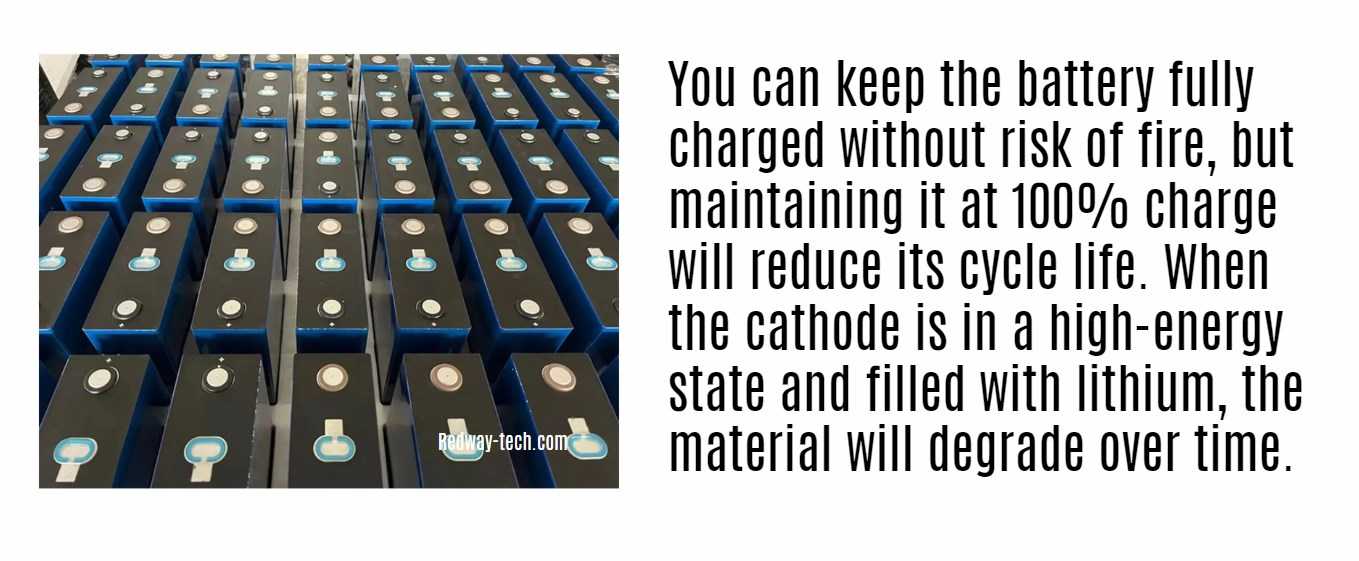Lithium Iron Phosphate (LiFePO4) batteries have gained popularity for their safety, longevity, and efficiency in various applications, including electric vehicles, renewable energy systems, and portable electronics. However, a common question arises among users: Should you keep LiFePO4 batteries fully charged? This article will explore the implications of keeping these batteries at full charge, the best practices for maintaining battery health, and the benefits of understanding charge levels.
1. Understanding LiFePO4 Battery Chemistry
1.1 What is a LiFePO4 Battery?
LiFePO4 batteries are a type of lithium-ion battery that utilizes lithium iron phosphate as the cathode material. This chemistry provides several advantages:
-
Safety: LiFePO4 batteries are less prone to thermal runaway compared to other lithium-ion chemistries.
-
Longevity: These batteries typically offer a longer cycle life, often exceeding 2000 cycles.
-
Environmental Impact: The materials used in LiFePO4 batteries are relatively non-toxic and environmentally friendly.
1.2 Charging Characteristics
LiFePO4 batteries have specific charging characteristics that influence how they should be maintained:
- Nominal Voltage: The nominal voltage of a LiFePO4 cell is approximately 3.2 to 3.3 volts.
- Full Charge Voltage: The recommended full charge voltage is around 3.6 to 3.65 volts per cell.
2. Implications of Keeping LiFePO4 Batteries Fully Charged
2.1 Cycle Life Considerations
Keeping a LiFePO4 battery fully charged can impact its cycle life:
-
Depth of Discharge (DoD): Regularly discharging to lower levels (e.g., 20-30%) before recharging can enhance the overall lifespan of the battery.
-
Full Charge Effects: While LiFePO4 batteries can handle being fully charged, consistently keeping them at this level may lead to slight degradation over time.
2.2 Voltage Stability
Maintaining a full charge can lead to voltage stability issues:
- If left at full charge for extended periods, slight voltage fluctuations may occur, which can affect performance in some applications.
3. Best Practices for Maintaining LiFePO4 Batteries
3.1 Optimal Charge Levels
To maximize the lifespan and performance of your LiFePO4 batteries:
-
Charge Range: Aim to keep the state of charge between 20% and 80% for regular use.
-
Periodic Full Charges: Performing full charges occasionally (e.g., once every month or two) can help balance cells without significantly impacting longevity.
3.2 Temperature Management
Temperature plays a crucial role in battery health:
-
Store and operate your LiFePO4 batteries within the recommended temperature range (typically between 0°C and 45°C).
-
Avoid exposing them to extreme temperatures during charging or storage.
3.3 Regular Monitoring
Regularly monitor your battery’s state of charge:
- Use a battery management system (BMS) or smart charger that provides real-time data on voltage and capacity.
| Charge Level (%) | Recommended Action | Impact on Lifespan |
|---|---|---|
| 100% | Full charge occasionally | Minimal impact if not constant |
| 80% | Ideal for daily use | Maximizes lifespan |
| 20% | Avoid deep discharges | Prevents damage |
4. Benefits of Understanding Charge Levels
4.1 Enhanced Performance
Understanding how to manage charge levels can lead to improved performance:
-
Batteries operating within optimal ranges deliver better power output and efficiency.
4.2 Increased Longevity
By avoiding constant full charges, users can significantly extend the lifespan of their LiFePO4 batteries:
-
This practice reduces wear and tear on battery cells over time.
4.3 Cost Efficiency
Longer-lasting batteries translate into cost savings:
- Reducing the frequency of replacements lowers overall costs associated with energy storage solutions.
5. Latest Developments in Battery Technology
Recent advancements in lithium battery technology focus on improving efficiency and safety features:
- Innovations in smart battery management systems allow for better monitoring and optimization based on real-time data.
- Research into solid-state batteries promises increased energy density and enhanced safety characteristics in future models.
6. Frequently Asked Questions (FAQs)
6.1 Can I leave my LiFePO4 battery fully charged all the time?
While it is possible, it is not recommended for long-term use as it may slightly reduce the lifespan over time.
6.2 How often should I perform a full charge?
Performing a full charge once every month or two is generally sufficient to maintain balance without compromising longevity.
6.3 What happens if I discharge my battery too deeply?
Deep discharging can lead to irreversible damage and significantly shorten the battery’s lifespan.
7. Conclusion
In conclusion, while you can keep Lithium Iron Phosphate (LiFePO4) batteries fully charged, it is not advisable for optimal longevity and performance. By understanding the implications of charging practices and adhering to best practices for maintaining charge levels, users can maximize their battery’s potential while ensuring reliability in various applications.At Redway Battery, we specialize in manufacturing high-quality Lithium LiFePO4 solutions tailored to meet diverse customer needs worldwide. With our extensive experience in this field, we provide custom solutions quickly for wholesale and OEM customers. For a quick quote or more information about our products, please contact us today!





